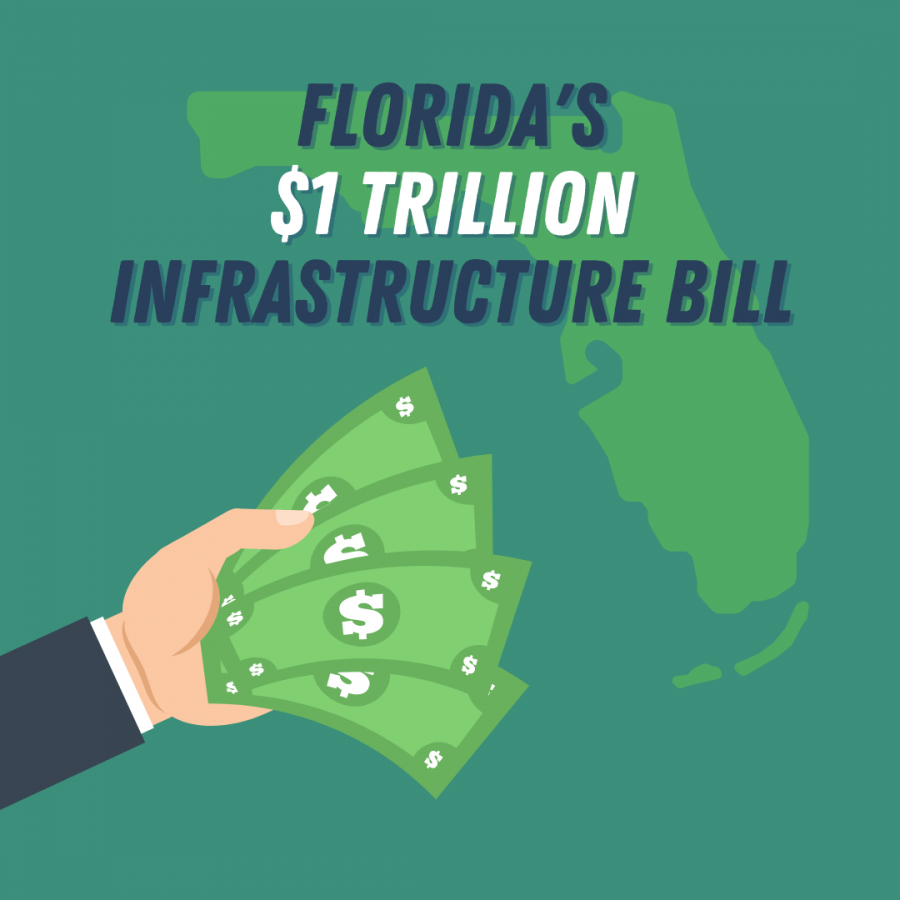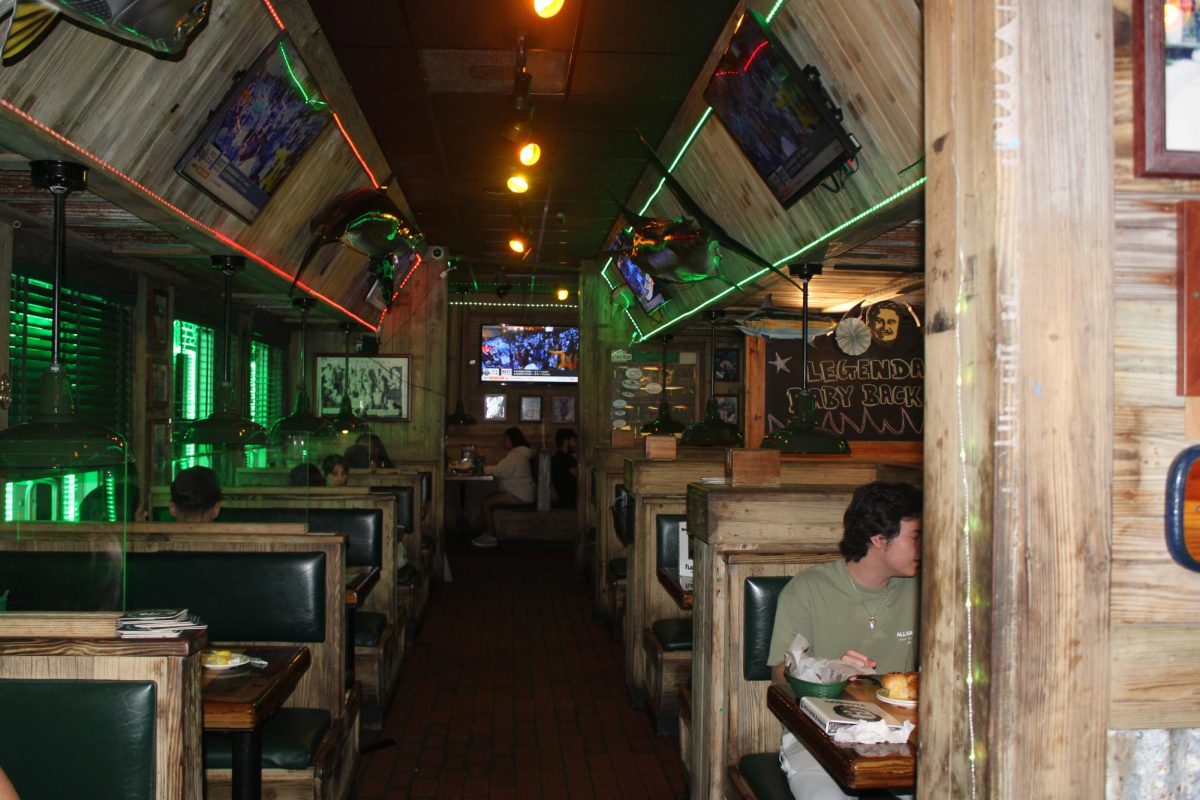$1 Trillion Infrastructure Bill Approaches Vote in the House
October 7, 2021
Back in early August 2021, the Senate passed an Infrastructure Bill with a bipartisan vote of 69-30. Although Florida’s Senior Senator Marco Rubio voted against the Investment Bill, both Democrats and Republicans agree that deteriorating roads, bridges and transit systems need immediate repair.
Currently, Democratic lawmakers struggle to come to an agreement regarding negotiations for the Infrastructure Bill, pushing back its vote in the House of Representatives. Both the Infrastructure Bill and the Reconciliation Bill fall under Biden’s economic agenda, the “Build Back Better Agenda.”
The Reconciliation Bill focuses on “human infrastructure” like child care and climate change. House Speaker Nancy Pelosi continues to delay her vote on the Infrastructure Bill, claiming they need more time coming to an agreement on the Reconciliation Bill before they can pass the Infrastructure Bill.
As the Infrastructure Bill approaches a vote in the House, it aims to provide new jobs and grow the economy while rebuilding America’s infrastructure. To read the full 2,700-page bill, click here.
Roads and Bridges:
According to the White House Fact Sheet, one in five miles of road or major highways need repair, while 45,000 bridges remain in poor condition. The bill calls for $110 billion to go towards repairing and rebuilding roads and bridges, including a focus on cyclists and pedestrians. The bill includes $40 billion in funding for bridge repair and rehabilitation. This is the largest bridge investment since the construction of the interstate highway system in the 1950s.
According to the fact sheet, the bill invests an additional $16 billion in major projects that are too large for traditional funding programs. The bill also invests $11 billion towards transportation safety programs to help reduce crashes for cyclists and pedestrians in their communities.
Public Transit and Rail:
The bill also calls for $39 billion to modernize transit and make it more accessible for the elderly and disabled. While upgrading old infrastructure, it also calls to modernize buses and rail fleets while simultaneously bringing public transportation to new communities. According to the fact sheet, zero-emission vehicles plan to replace thousands of transit vehicles.
The bill plans to dedicate $42 billion toward airports, ports and waterway infrastructure. The bill calls for airports to receive $25 billion to repair maintenance backlogs and reduce emissions. This is the largest federal investment in transit in history.
The bill calls to invest $66 billion in the passenger and freight rail to eliminate AMTRAK’s maintenance backlog and bring railroad services to areas outside the northeast and mid-Atlantic regions. According to the bill’s text, $12 billion in grants for intercity rail services is included.
According to the fact sheet, the White House hopes this bill will benefit people of color since they are twice as likely to use public transportation. The bill includes $1 billion in reconnecting black communities impacted by the construction of past highways and directly separating them.
“Buildings and structures have useful lives, and they need to be maintained. Everybody who owns a home knows that every 20 years or so they’re going to need a new roof,” Village of Pinecrest Councilmember Anna Hochkammer said. “Well, all of our facilities every 10, 15 or 20 years, are going to need a new roof, are going to have need to have their parking lots repaved, are going to need to have their air conditioning systems upgraded…. the same kinds of maintenance and upkeep that anybody who owns a private home knows is part of the expense of that.”
Electric Vehicles:
The bill invests 7.5 billion in expanding the nation’s network of electric vehicle chargers. The Biden-Harris Administration stresses the importance of electric vehicles to address climate change while producing domestic jobs. Federal funding plans to focus on rural, disadvantaged communities by providing them with these resources.
“It has been an issue when I run out of power and need somewhere close by. I’m looking forward to more charging stations,” Miami Palmetto Senior High School junior Cooper Menachem said.
The bill also plans to replace yellow school buses with thousands of zero-emission electric school buses nationwide. The bill includes $2.5 billion in zero-emission buses, $2.5 billion in low emission buses and $2.5 billion for ferries.
“A lot of school buses run on diesel… not only a fossil fuel, putting greenhouse gases like carbon dioxide into the atmosphere… also particulates matter in the atmosphere. And unlike other countries, the United States is really kind of far behind with having vehicles that are electric vehicles. So it certainly will help create jobs,” Miami Palmetto Senior High AP Environmental Science teacher Pamela Schlactman said.
Power and Water Systems:
According to the fact sheet, the legislation plans to fund $65 billion to rebuild the electrical grid and construct thousands of miles of power lines. It plans for the investment of $50 billion in protection against natural disasters, such as droughts, floods and wildfires. This is the largest investment in the reliance of physical and natural systems in American history.
The bill calls for an investment of $55 billion towards replacing existing lead service pipes, so clean drinking water is accessible for everyone, including tribal and disadvantaged communities.
High-Speed Internet:
The bill dedicates $65 billion towards expanding internet access, something that has proved a major problem during the Covid-19 pandemic.
Environmental Remediation:
The bill plans to dedicate $21 billion towards cleaning up Superfund and brownfield sites, reclaiming orphaned gas wells and reclaiming abandoned mines. Proximity to these sites have caused health problems for Americans in the past.
“[Cleaning up Superfund sites] will help the surrounding areas because then if those get cleaned up, they can be utilized for something else, whether it’s for development or anything along those lines. When brownfields are cleaned, it allows for the development of a community center in an area or community garden, so it enriches the neighborhood,” Ms. Schlactman said.
The Congressional Budget Office calculates that the Infrastructure Bill’s finances would come from adding to the nation’s debt from 2021 to 2031. Many members of the House and Senate continue to voice their concerns that the cost of Biden’s Build Back Better Economic Agenda could potentially cause inflation and future economic damage.











